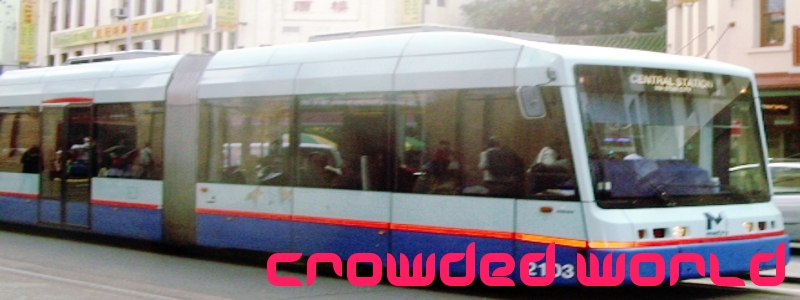

| EASTWOOD :: SYDNEY :: NEW SOUTH WALES :: AUSTRALIA :: CROWDED WORLD AT THE WEEKEND (SATURDAY, APRIL 28) I WAS AT MY BROTHER'S HOUSE IN EPPING IN NORTH-WEST SYDNEY, AT A REMISSION PARTY, WHEN I TOLD MY BROTHER'S PART-CHINESE NEIGHBOUR THAT I HAD JUST COMPLETED A 10-YEAR LIFE IN JAPAN. The neighbour asked me if I missed Japan, and I said I surely did. "You should go to Eastwood, then; it's just down the road," he replied, an authorative look in his eye. "It's like Chinatown, except it's full of Koreans. It might remind you of Japan... people eating and shopping for good Asian food." A few days later, reading Murdoch's local rags, I discovered that Eastwood's Rowe Street and Railway Parade were listed among Sydney's "ethnic eat streets", suburbs which the NSW Government could exploit to promote international food tourism. Since I have always been a fan and promoter of ethnic enclaves, I knew I had to go down there, and check it out. The fact that it was only an hour from my place by train sealed the deal. The next day, I was in Eastwood.
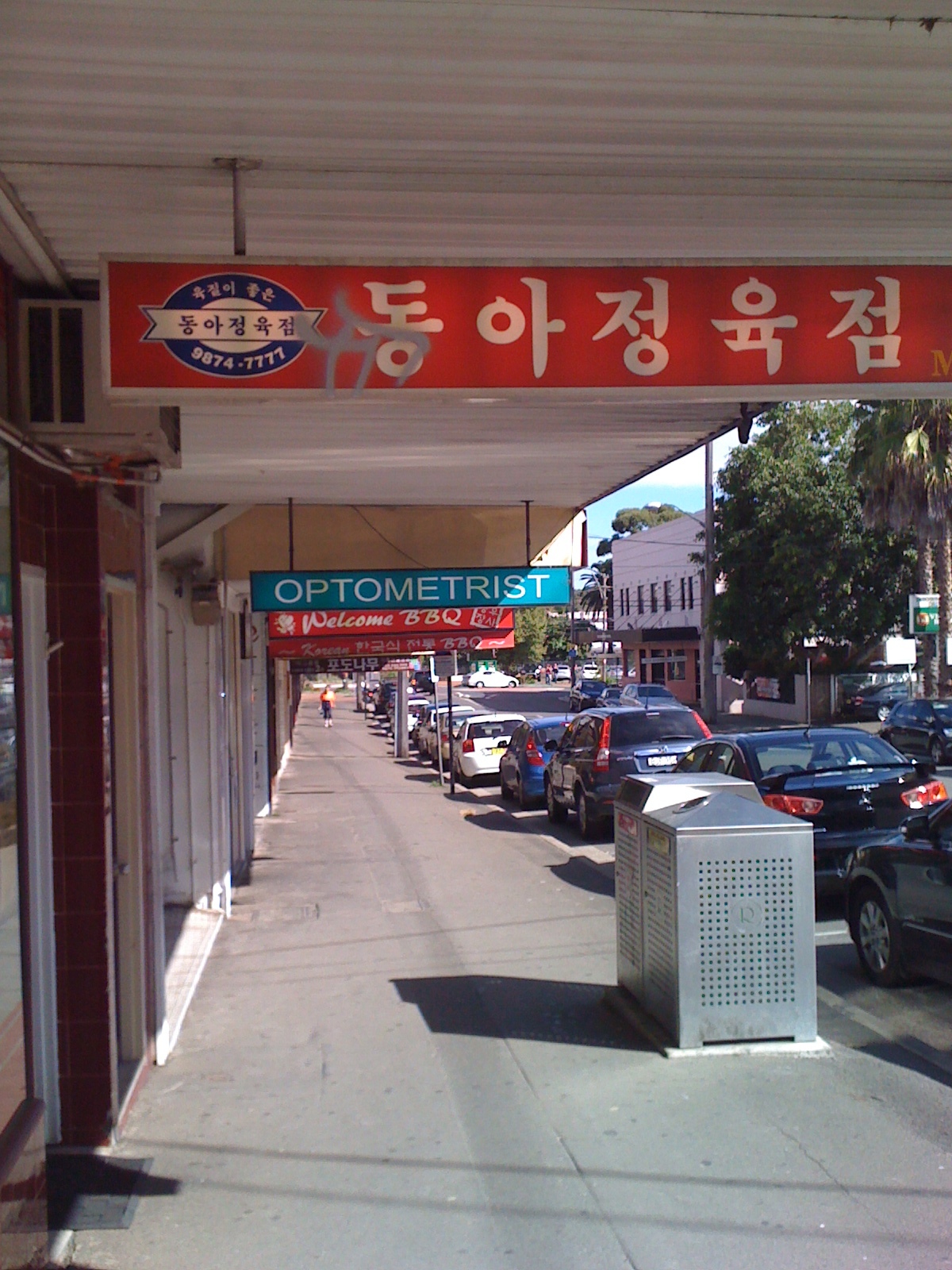 I had been through Eastwood Station many times in the past, from back in the 1990s to the present, on journeys to and fro the Central Coast, up the Northern Line. I had glanced out the train windows to observe the hangul signs on the suburban streets, advertising their business (be they barber or Korean barbeque). I had noticed the many East Asian looking people leaving and entering the train, as it pulled on to the platform. I had not until now, however, actually stopped and had a decent look around. Dismounting from my train about 10.30 on a Tuesday morning, I realised it was precisely the full authentic Oriental experience that my brother's neighbour had promised me: I was the only whitefella in sight. I even noticed a young Japanese couple, rushing around with a map. The atmosphere was hectic, as a good Asian railway should be.
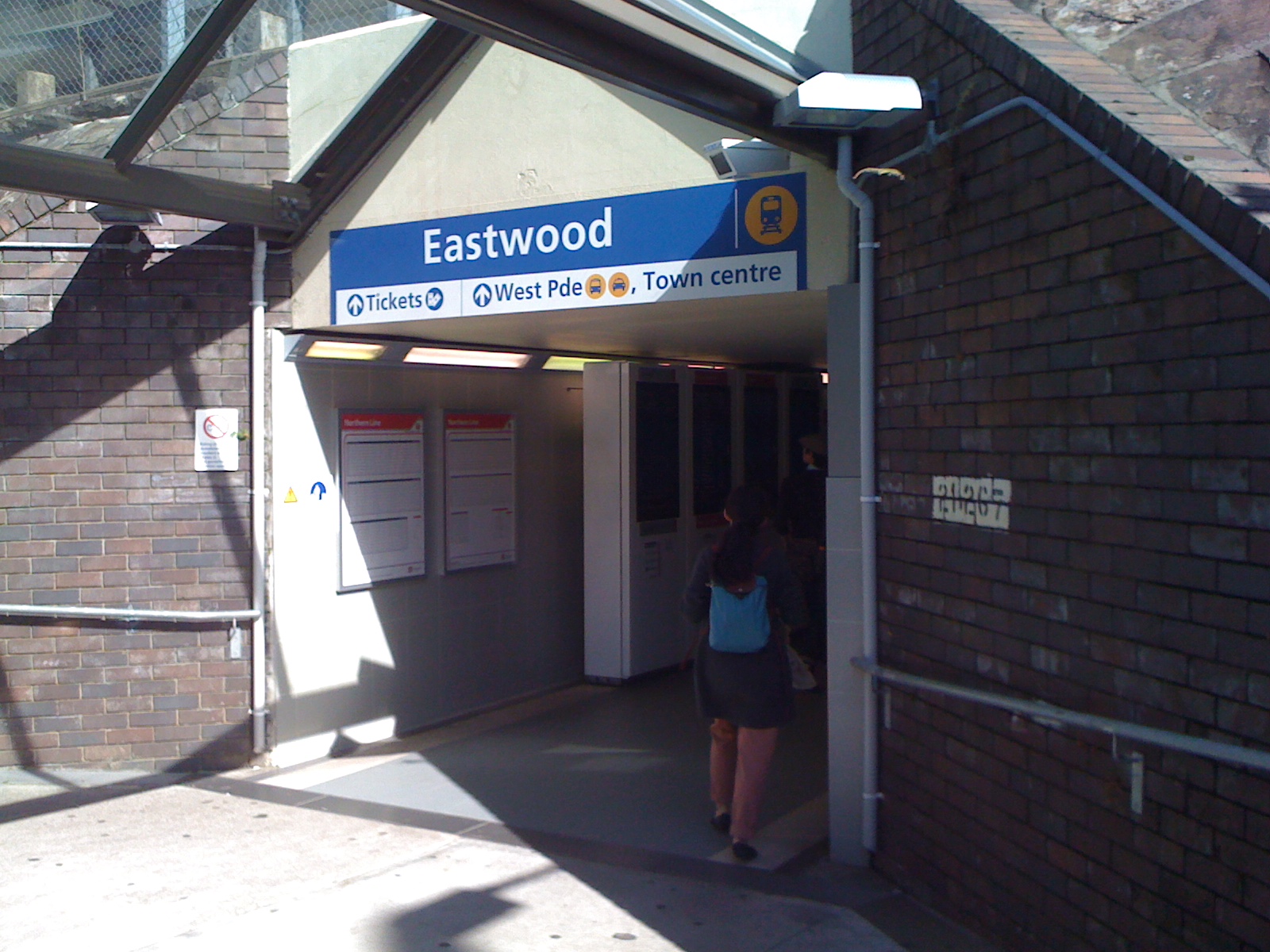 The station has two exits: east and west (on to West Parade). Not being familiar with the layout, I decided to take a walk on the east side first. Outside stretched a street lined with those hangul signs I used to look at while the train was idling back in the 1990s, when Korea was a mystery to me. Now I had three trips to the Korean peninsula under my belt, and I could read that strange, modular alphabet (a little). It was mid morning, and there were few people on the street.
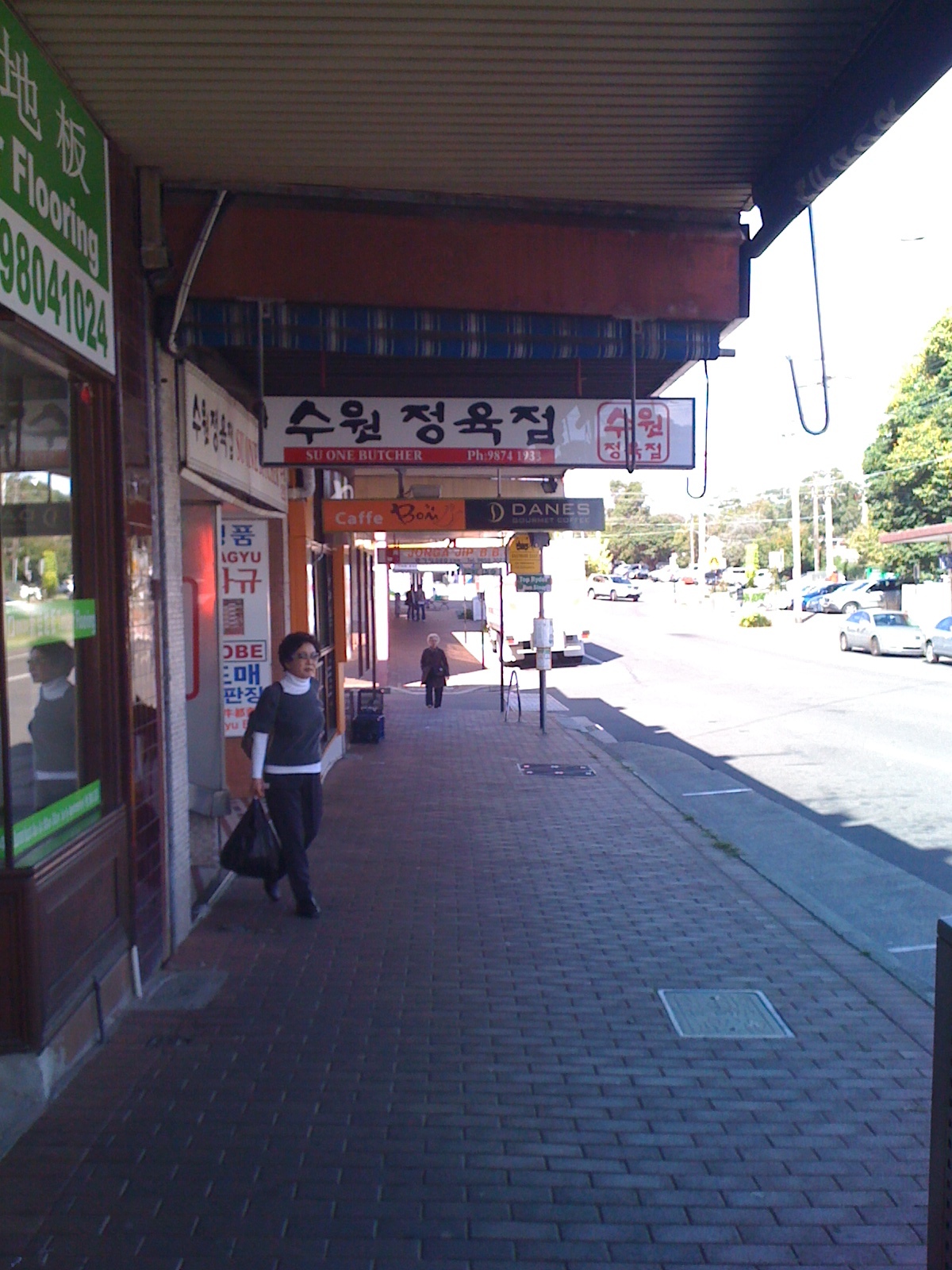 Korean barbeque restaurants seemed to be a particularly big deal here, all of them serving some exotic dishes. Chicken feet, chicken stuffed with ginseng, even chilli chicken and cheese. Korean supermarkets also appeared to be numerous. I ambled along, peering into doorways. Too early for lunch yet (it was only 11am).
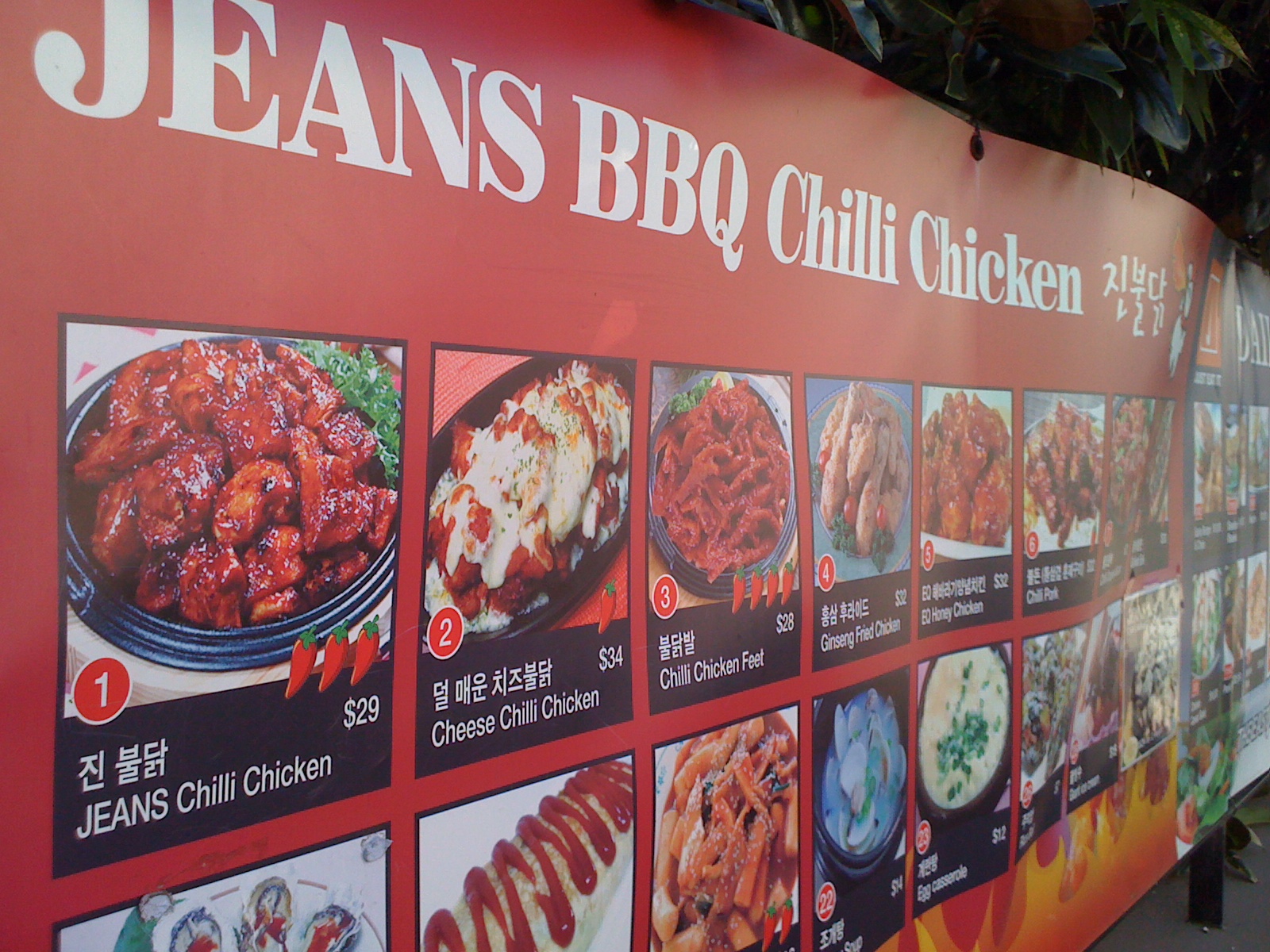 La Vigne Bakery (see map here), 82 Rowe Street. Across the road from the Pishon Patisserie and Cake Cafe.
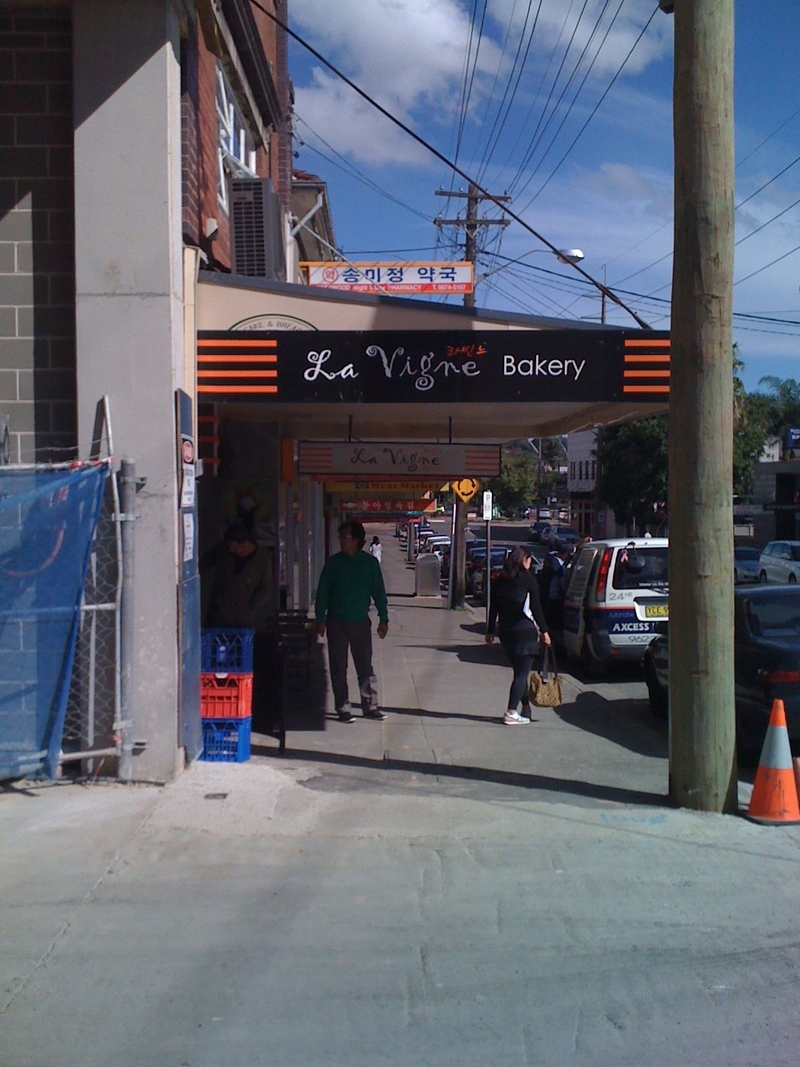 Acupuncture, massage, and chiropractor services.
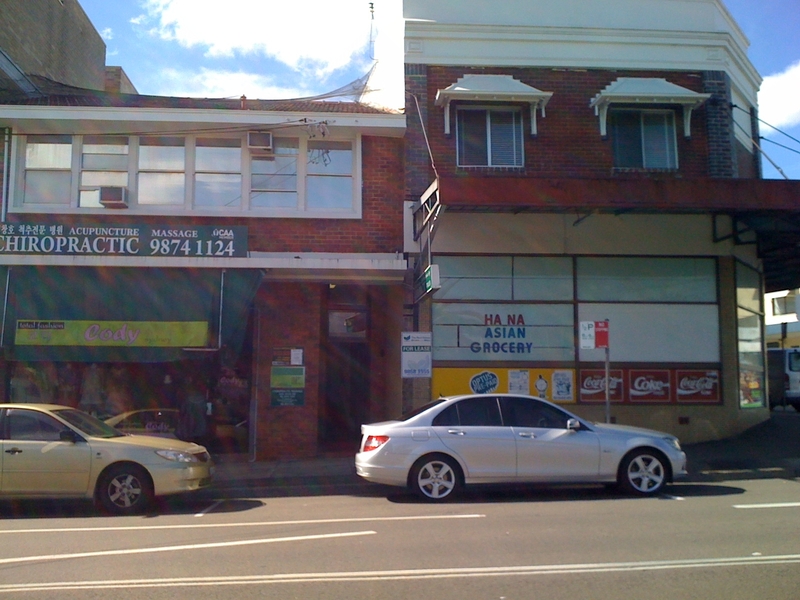 The other side of the tracks, the west side of the station, is where all the action is in Eastwood.
 y. At this intimate, busy eatery decorated with grapes and Persian rugs, the noodles are handmade in traditional northern Chinese style.
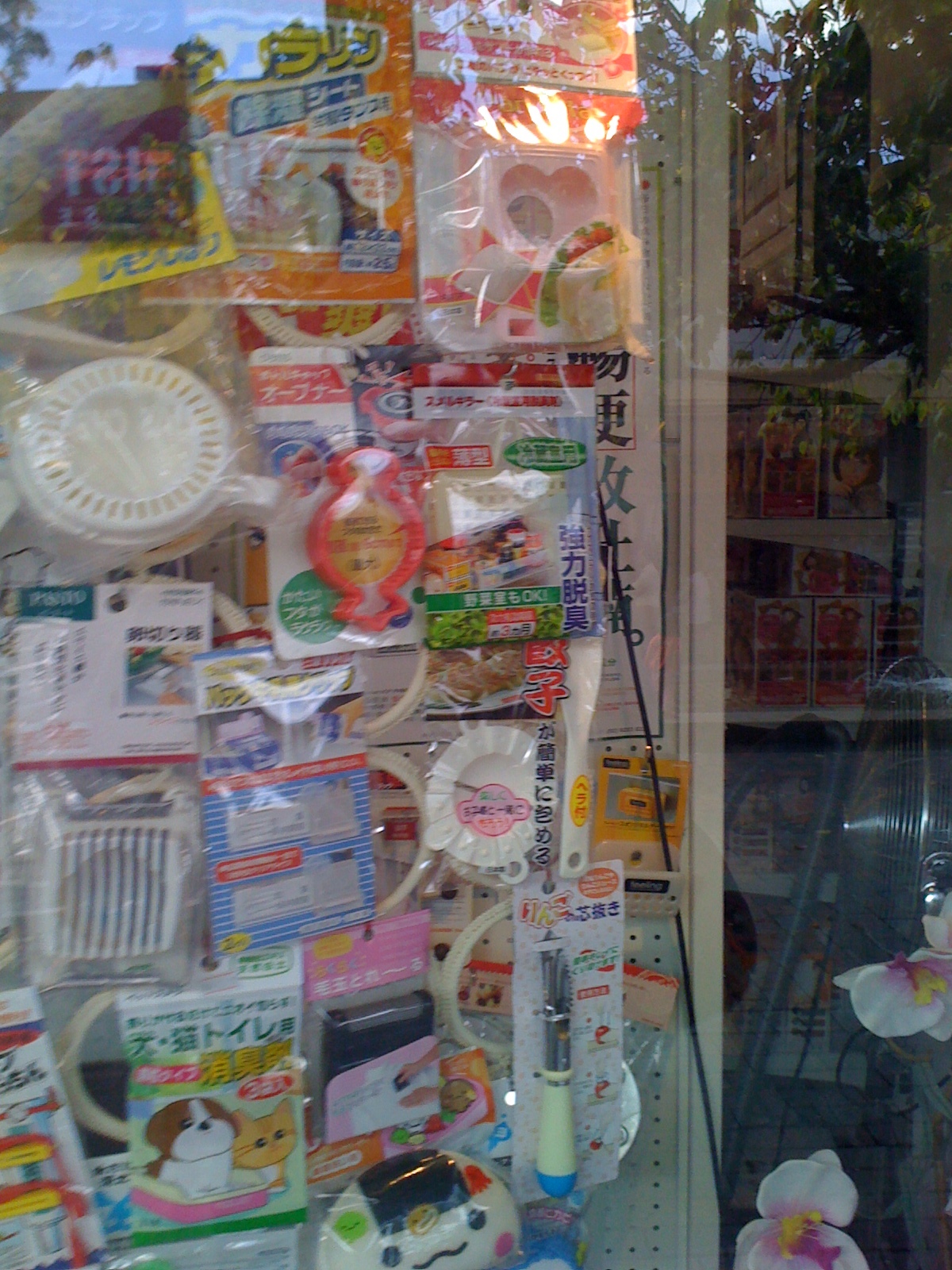 It's funny how when you are in Japan, like in say a 100 Yen store, the bric-a-brac looks futuristic and cool... but when you bring it to Australia it suddenly turns into plastic junk.
Nam Viet Restaurant: 142 Rowe St, Eastwood. Phone: (02) 9874 0929. Fax: (02) 9874 0953.
Pho Sam Noodle House: Epping. Phone: (02) 9869 0499.
Strathfield, Sydney's Other KoreanTown
Beauty and the Beast: 393-399 Sussex St, Haymarket. Phone: 02/9212 3901. 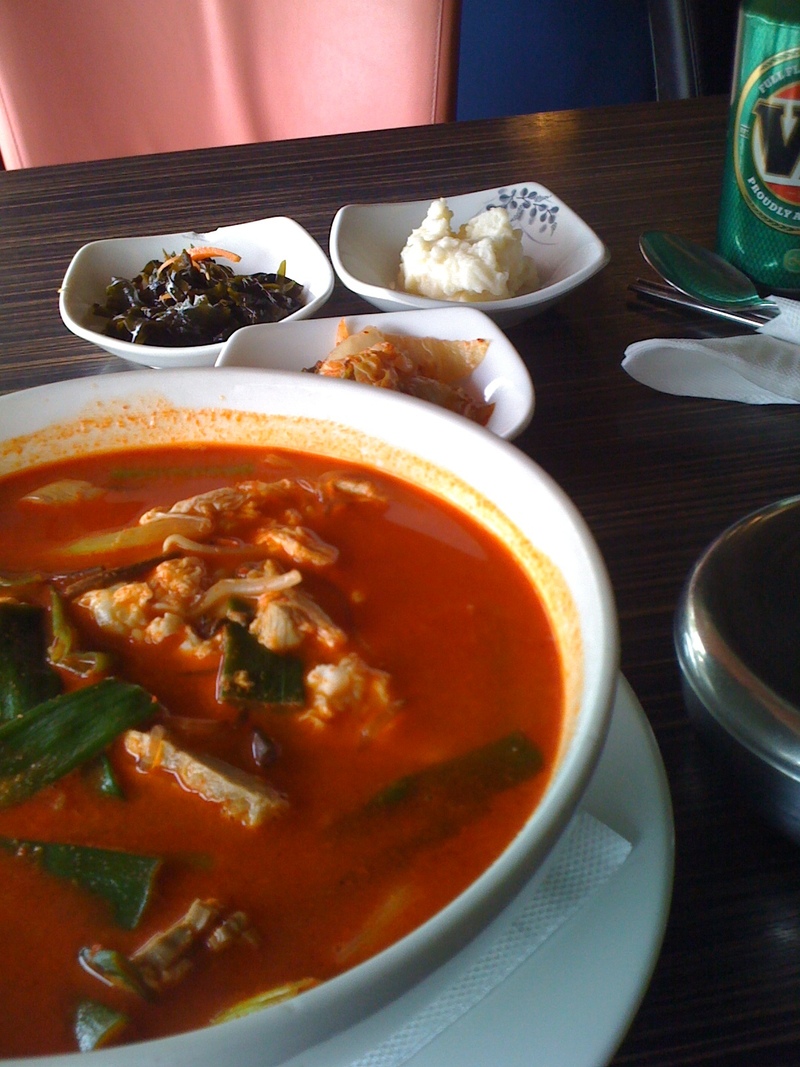 Lam's Seafood Restaurant: 35-37 Goulburn St, Haymarket. Phone: 02/9281 2881/2. Entrees $4-23.80, mains $15 - market price seafood. Open noon-4am. Quick lunch? Luxurious banquet? You can do both here. Popular with locals, visitors and anyone in-between, Lam's has an extensive menu and staff who know a thing or two about getting the most out of the kitchen.
Mamak: 15 Goulburn St, Haymarket. Phone: 02/9211 1668.
Marigold Citymark: Levels 4/5, 683-689 George St, Haymarket. Phone: 02/9281 3388.
Silver Spring: Level 1, 477 Pitt St, Haymarket. Phone: 02/9211 2232.
Tetsuya's: 529 Kent St, (behind George St cinemas near Chinatown.) Phone: 02/9267 2900.
Wagaya: 1/78 Harbour Street, Haymarket. Phone: 02/9212 6068. Here are some of the fave food courts which can be found in Chinatown and around:
Dixon House Food Court: corner of Little Hay and Dixon Sts, Haymarket.
Eating World. 25-29 Dixon Street, Chinatown.  I first stumbled upon this little piece of Asia transplanted on to Australian soil back in 1996, when I was working at the nearby Daily Telegraph as a hack. The highlight of my three month stay there was glimpsing media mogul Rupert Murdoch on a surprise visit to the office (he was probably trying to shore up his ailing SUPER LEAGUE strategy, but that is another story.) While working at the newspaper I usually dined on Malaysian chicken laksa from a nearby takeout shop, but if I was feeling more adventurous and had enough time, I would head down to Chinatown. I usually ended up at Eating World which reminded me of some of the great food courts of Asia. Eating World is a favourite with students, large families, groups of teenagers and lone eaters. Expect no glamour (then again, you wouldn't expect glamour at any of the great food courts of Asia.) You choose, you wait, they ring the bell, you pick up your food from the stall, your utensils from one of the stations scattered around the hall, go to a table and eat. Lingering is not encouraged. There is a bar in the place and I used to love sucking down those Hahn Ice's and Carlton Colds, especially if I was eating something spicy at the time. If you love Asian food, it's all here, from Peking duck to Vietnamese pork rolls. It was in fact Vietnamese pork rolls that I ate on my last visit, in October 2005. And true to tradition I washed it down with -- a beer from the house of Hahn... Another regular and enthusiastic diner, John Newton, claims some of the better Eating World dishes include the beef and bitter melon hot pot from Chinatown Gourmet ("tender beef, dried shiitake mushrooms, ginger and enough melon to satisfy my bitter cravings"), beef rendang from the Bundo Raya halal stall and the chilli octopus at the Korean/Japanese hawker's stall. The Yummi House Taiwanese pancakes are also strongly recommended! Eating World was named the best food court in Sydney by one prominent youth hostel group. Its fame has spread beyond the yellow sand shores of Australia, into Asia -- showing that Sydney can mash it up on the Asian dining scene. On one Bahasa Indonesian website I found a tribute to Eating World. On the forum a poster, h4nh4n, had asked his Indo brethren: "Hello Guys, daripada bete and ga ada yang aktif di regional Sydney... mendingan gue nanya deh. Tempat makan favorite lu di Sydney tuh dimana?" Sorry to all the Indo folk out there -- my Bahasa Indonesian skills are pretty basic! I will hazard a wild guess and make an on-the-fly translation of this tempat (question) -- "where are your favourite eating places in Sydney?" A worthy tempat indeed, worthy of a worthy answer. h4nh4n himself mentions Star City's all-you-can-eat buffet as a good place for makan (food). Ming Hai on George St gets a jersey -- "gw recomend tomato rice crispy chickennya." h4nh4n later adds: "Kalo yang ada nasi padang tuh eating world tuh... kalo dixon jalan sussex deh kayaknya, ada di basement gitu deh." For lovers of Indonesian food, go to Pondok Selera in Eating World (opposite the bar). Ever since I started my job at Alternative Media, I have made it my aim to eat there once a month or so. Pretty much everything on their menu is good. There is Indonesian offal soup ($9.50), Loh Mee braised beef noodles in black vinegar sauce ($9.50), udang belado prawns and rice ($11.80), and so on. The time before last I ordered a noodle soup containing some kind of greenish-yellow offal, pork balls and yellow noodles. I noticed there was a lunch special going (any three choices of curry like beef rendang and rice for $7.80).
Harbour Plaza Food Court: corner of Dixon and Goulburn Sts, Haymarket.
Market City Shopping Centre: Level 3, 2-13 Quay St, Sydney. Phone: 02/9212 1388.
Sussex Centre: 401 Sussex St, Sydney.
PYRMONT PLACES  PYRMONT IS AN UNDERAPPRECIATED PART OF SYDNEY, POPULAR WITH STUDENTS. It is also a good place for cheap eats. The chicken laksa at Kopitiam (592 Harris Street; phone: (02) 9282 9883) is well known and delicious.
CHINESE LEGACY  CHINATOWN OCCUPIES THE HEART OF SYDNEY CITY AND, IN A WAY, ALSO OCCUPIES A CENTRAL ROLE IN AUSTRALIAN HISTORY. As The Sydney Morning Herald wrote: "While early Chinese arrivals in Australia set up stores at The Rocks, the introduction of "coolie" labour in the 1840s and the increase in migration after the discovery of gold the following decade saw them established at the other end of town. By 1900, according to one history, 86 per cent of Chinese regarded the Haymarket area, today's Chinatown, as their place of residence, and in the 1920s the Chinese merchants there had a working relationship with the City Council, which owned most of the area, including the markets. "Nevertheless, it's an odd juxtaposition, given the White Australia policy of most of the 20th century, that two such Australian symbols as Paddy's Market and Trades Hall lie within Chinatown. "Trades Hall is a wonderful building of four storeys, light sandstone pillars with red bricks in between, on the corner of Dixon and Goulburn Streets. It has a magnificent multi-sided tower with little balconies and a turret topped with tarnished green copper. Its foundation stone was laid by His Excellency, the Right Honourable Henry Carrington, GCMG, on January 28, 1888. "Here, narrow Dixon Street has been "pedestrianised", and buskers sell CDs not just of Great Oriental Classics and Chinese Violin Masterpieces but also Romantic Melodies (including such well-known numbers as Unchained Melody and Don't Cry for Me, Argentina). These are played on the Chinese harp, a bowed stringed instrument popular during the Song Dynasty, around AD 960-1279, and the erhu, the Chinese violin. ".
advertise on this site - hire me - home - privacy policy - mumbai dining challenge - saigon dining challenge
|
| |||||||||